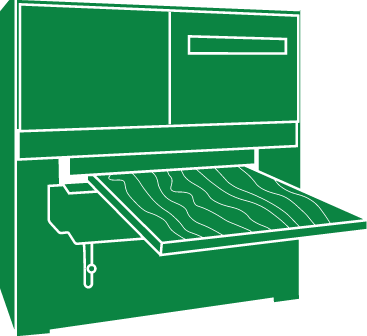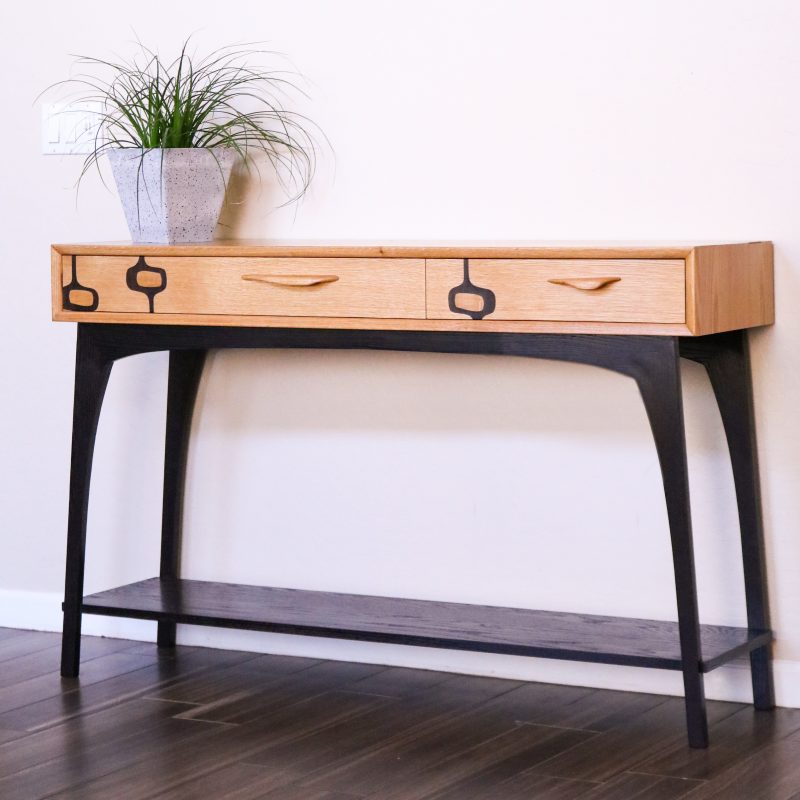Roasted oak?
I know what you’re thinking. What’s up with this idiot?
To give you a little context, in the 20 years I’ve been slinging sawdust in the hardwood lumber racket, I’ve travelled to more than a few sawmills and forestry projects around the western hemisphere.
So I’ve seen a lot of delightful, sometimes bizarre, woods and how they’re harvested — and yet I found this one to be so interesting, beautiful, and unique that I thought you’d like it too.
Here’s the scoop.
It’s just regular American red oak that’s undergone heat-treatment. Red oak might be the most ubiquious hardwood in the USA, so I have a feeling you’ve seen it and can conjure what it normally looks like.
It’s pale. Bland. Grainy. Somewhat objectionable or old fashioned looking.
But this stuff we call “roasted oak” has been baked in an oven to the extent that the wood oxidized to an elegant espresso color that’s both
That’s just how it looks. And it looks cool.
The roasting process also modifies the wood cells in a way that make it water resistant (for lack of a better word). That makes heat-treated oak extremely stable and suitable for exterior projects because it’s not suceptible to wood movement and the havoc of the changes brought on by rain, snow, sunshine, humidity and temperature.
Give this video a spin to learn more about how it’s done, why, and what to know about working with the material.
I think you’ll like it.

Ease the Edges
The heat treatment makes the wood more brittle than usual. Therefore sharp corners and edges can splinter quickly, so on your final project parts take a few passes with some 220-grit sandpaper to ease things back.

Wear a Mask
Frankly, it’s a good idea to wear a dust mask or respirator while woodworking anyway. But the dust of this material is so evident that it’s worth throwing out this reminder

Use the Right Glue
Check out 4:09 in the video for a glue test. Polyurethane glue is the recommended option, but Titebond II Dark will do as well

Apply a Finish to Make it Black
Realistically, just expect the wood to come out black or just shy of black regardless of the finish you choose. But a coat of linseed oil or tung oil will come out the darkest.

Vice President of Operations – Woodworkers Source
We’re a family-owned lumber & woodworking supply retailer with 3 delightful stores in Arizona, and 35 friendly employees.
Mark oversees the company and creates tutorials on wood finishing and woodworking tips for hardwood lumber.
Woodworkers Source is a division of MacBeath Hardwood Co.
